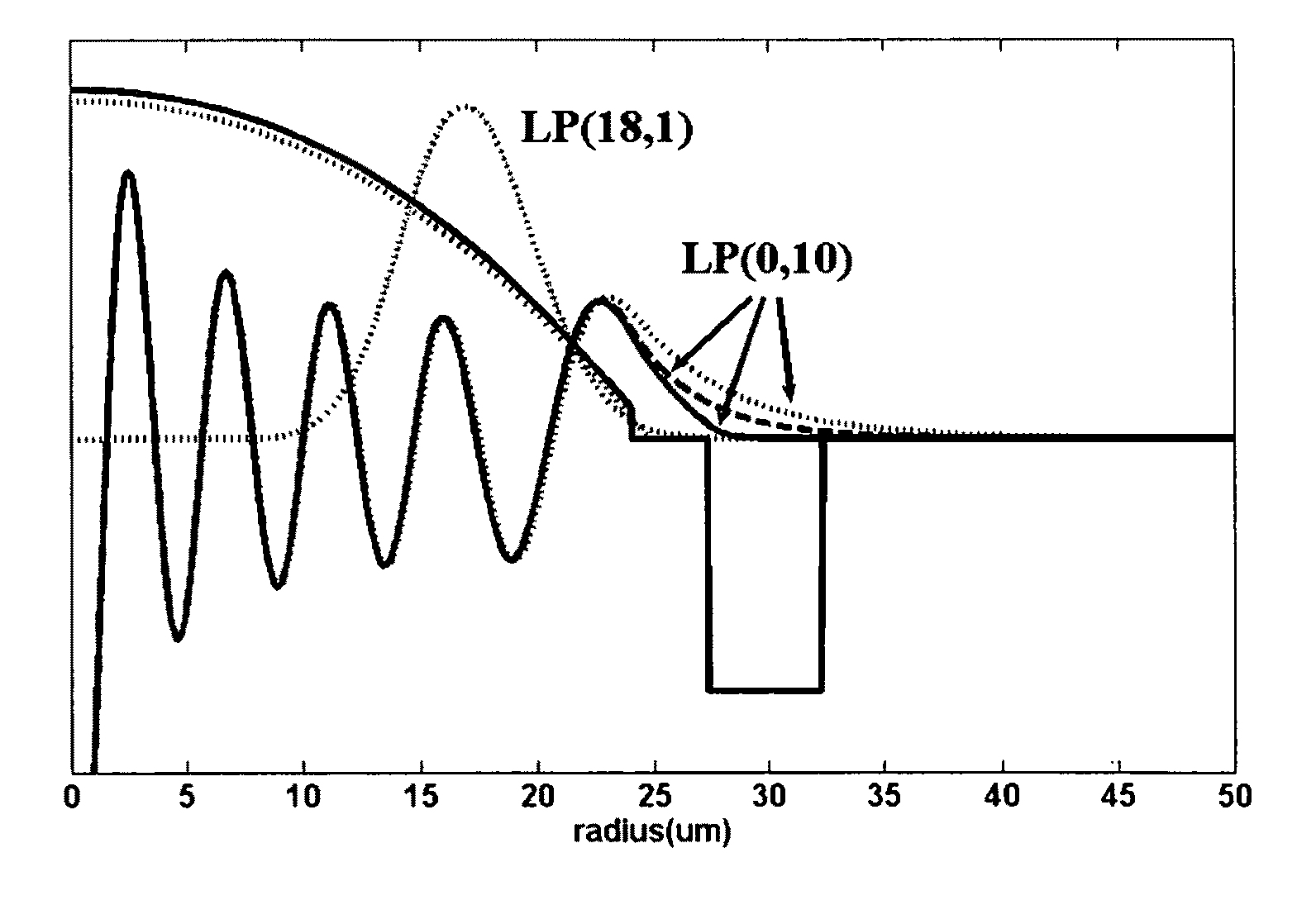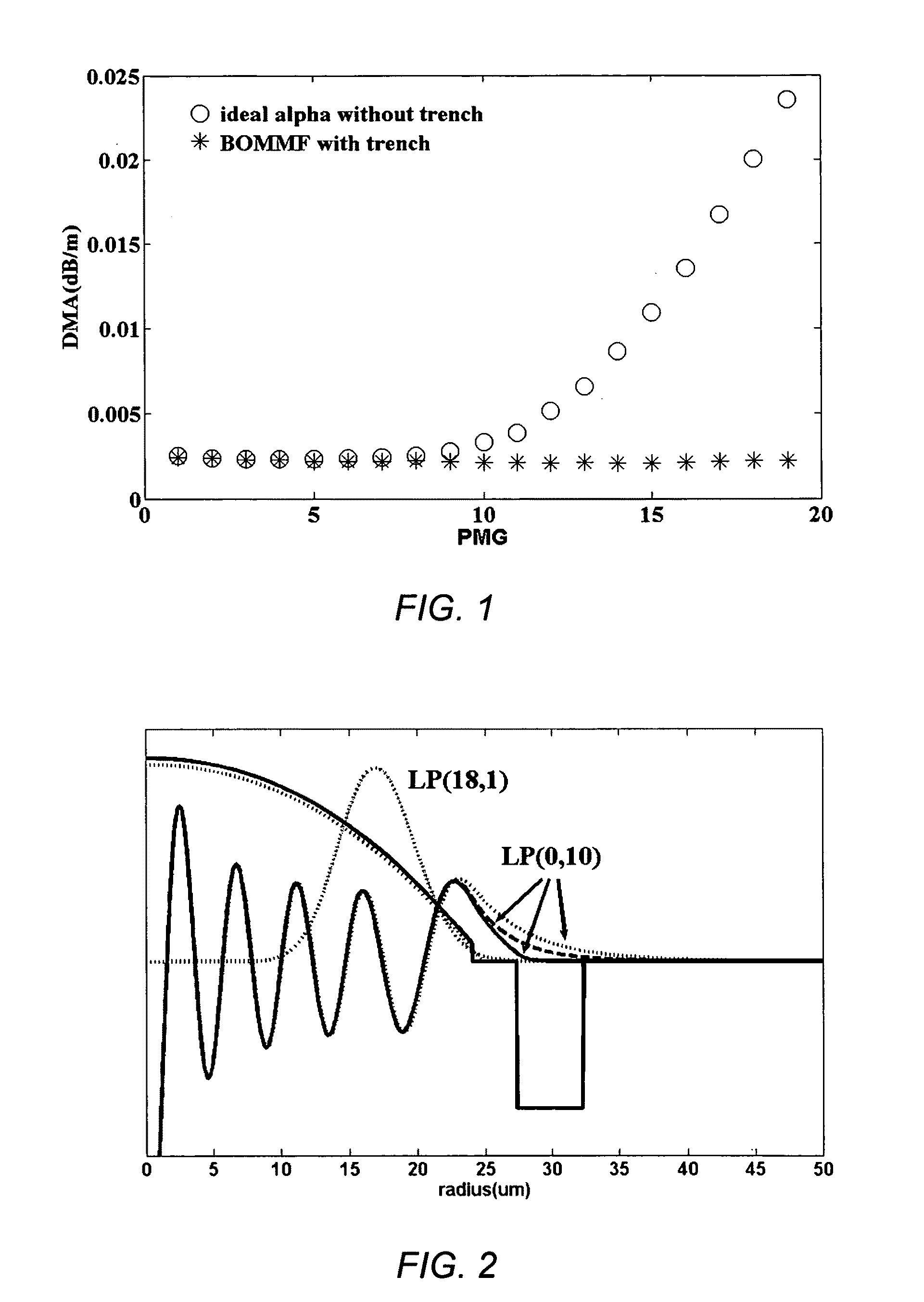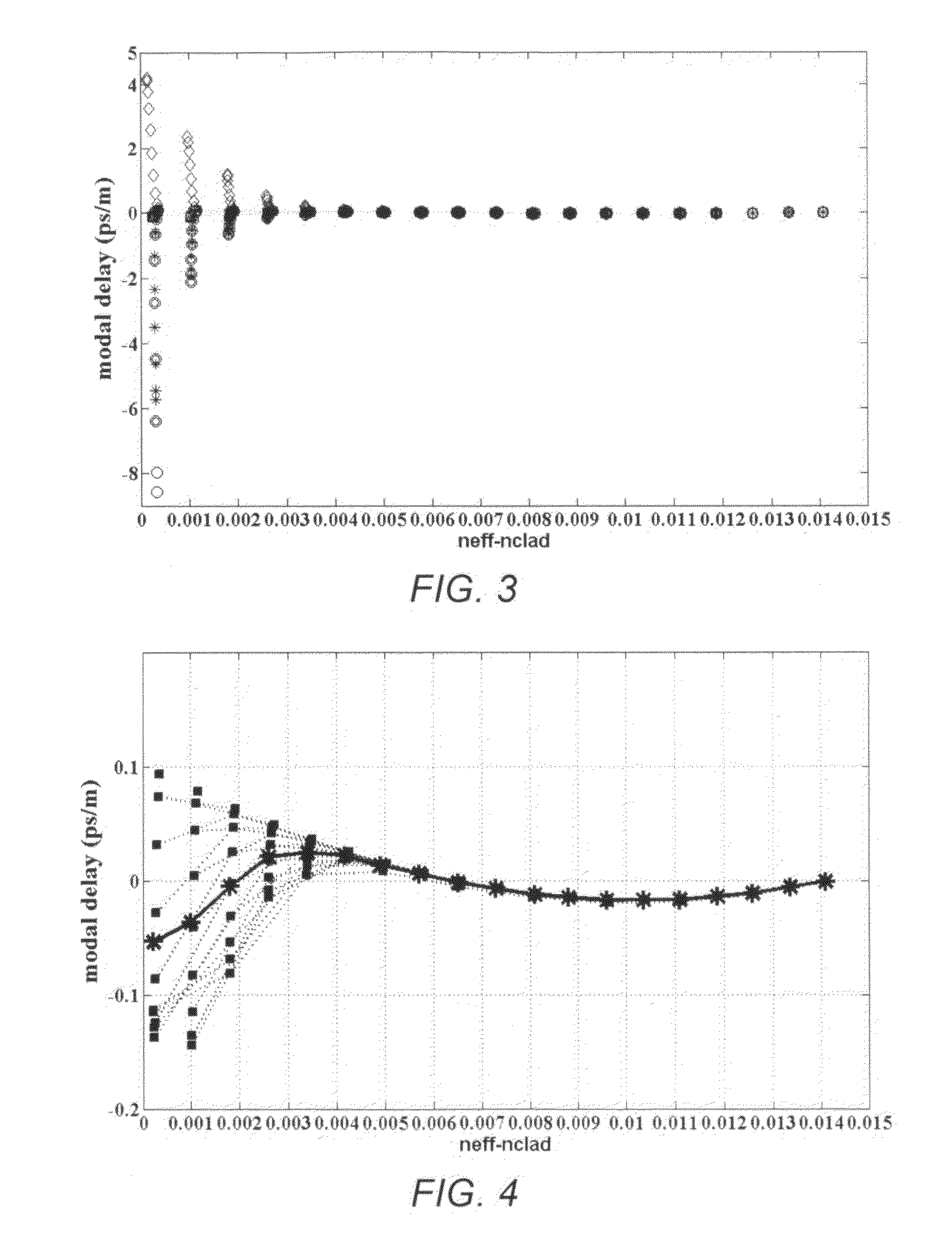Equalizing modal delay of high order modes in bend insensitive multimode fiber
a multi-mode fiber and modal delay technology, applied in the field of multi-mode optical fibers, can solve the problems of controlling transmission characteristics when bent, curvature exceeding the ability of light guides, and limited principle, and achieves relaxation of tolerances for vcsel coupling, reducing bend loss, and high packaging densities
- Summary
- Abstract
- Description
- Claims
- Application Information
AI Technical Summary
Benefits of technology
Problems solved by technology
Method used
Image
Examples
first embodiment
[0028]In the invention, the optical fiber consists of four regions: (a) a α-shape core with positive index relative to the silica cladding, (b) an annular region next to the core, (c) a trench with negative index next to the annular region, (d) a silica cladding next to the trench. The four regions may be represented as:
[0029]n(r)-nclad=Δ(1-(rrcore)a)·ncladforr≤r0≤rcore=Δ1·ncladforr0<r≤rtr2=Δ2·ncladforrtr1<r≤rtr2=0forr≥rtr2(2)
where n(r) is absolute refractive index at radial position r, nclad is absolute refractive index of cladding, Δ, Δ1, Δ2 are relative index difference, r is radial position, rcore is core radius, r0 is a position less or equal than rcore and α preferably has a value of 1.9 to 2.2. Δ2·nclad is also denoted as the trench DN or DNtr.
[0030]It has been discovered that, contrary to the idea that the inner wall of the negative index trench needs to be precisely shaped to optimize the modal delay of high order modes, a step trench, having...
second embodiment
[0037]It is shown above how the modal delay of high order modes is equalized by predetermined radial position and depth of the trench. For example, the relative effective index of those modes may be adjusted to be monotonically decreasing with its span between −134 (×1e−6) to −126 (×1e−6) for a 50 μm MMF with core delta of 1.05%. In addition to controlling trench parameters, the subtle modification of the core profile especially the edge may effect high order mode equalization according to the invention.
[0038]In this alternative embodiment, the fiber consists of four regions: (a′) a modified α-shape core, (b′) an annular region next to the core, (c′) a trench with negative index next to the annular region, (d′) a silica cladding next to the trench. An equation of the index profile for this embodiment can be described as:
[0039](4)n(r)-nclad=Δ(1-(rrcore)a)·nclad+Jforr≤r0=Δ(1-(rrcore)a)·nclad+J+m×(r-r0)rcore-r0forr0<r≤rcore=Δ1·ncladforrcore<r≤rtr1=Δ2·ncladfor...
PUM
 Login to View More
Login to View More Abstract
Description
Claims
Application Information
 Login to View More
Login to View More - R&D
- Intellectual Property
- Life Sciences
- Materials
- Tech Scout
- Unparalleled Data Quality
- Higher Quality Content
- 60% Fewer Hallucinations
Browse by: Latest US Patents, China's latest patents, Technical Efficacy Thesaurus, Application Domain, Technology Topic, Popular Technical Reports.
© 2025 PatSnap. All rights reserved.Legal|Privacy policy|Modern Slavery Act Transparency Statement|Sitemap|About US| Contact US: help@patsnap.com



